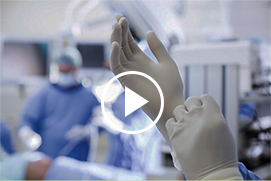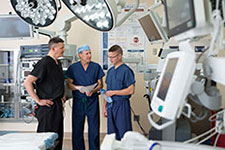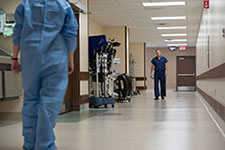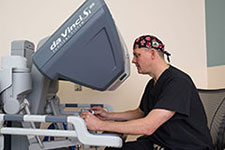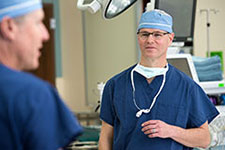What are gallstones?
Gallstones are lumps of solid material that form in your gallbladder. They are made when the digestive juice called bile gets hard and stone-like.
The gallbladder is a small organ under your liver. It stores bile made by the liver. Bile is made of several things such as cholesterol, bile salts, and a yellowish pigment (bilirubin).
Gallstones can be as small as a grain of sand or as big as a golf ball. Your gallbladder may form 1 large stone, hundreds of tiny stones, or both sizes at the same time.
There are 2 types of gallstones: cholesterol and pigment.
Cholesterol stones
- Are the most common in the U.S.
- Are most often a yellow-green color
- Are made mainly of hardened cholesterol
Pigment stones
- Are less common
- Are a dark color
- Are made of a yellowish pigment called bilirubin
In some cases gallstones block the tubes that carry bile (bile ducts). This can lead to a life-threatening infection of the bile ducts, pancreas, or liver.
What causes gallstones?
Cholesterol stones form when your gallbladder doesn’t empty the way it should. They also form when bile has:
- Too much cholesterol
- Too much of a yellowish pigment called bilirubin
- Not enough bile salts
Health experts don’t know what causes pigment stones to form. But pigment stones are more common in people who have:
- A liver disease (cirrhosis) where scar tissue replaces healthy liver tissue
- An infection in the vessels that transport bile (biliary tract infection)
- Blood disorders that are passed from parent to child (hereditary) such as sickle cell anemia.
Once you have had gallstones you are at risk of having more.
Who is at risk for gallstones?
Some people have a higher risk for gallstones. These include:
- Native Americans. They have the highest rates of gallstones in the U.S. This may be genetic as they have very high levels of cholesterol in their bile.
- Mexican Americans. They have higher than average rates of gallstones.
- Women. They are twice as likely to have gallstones as men.
- People over 60.
- People with a family history of gallstones. Gallstones seem to run in some families (be hereditary). There may be a genetic link.
Health issues that may raise your risk for gallstones include:
- Obesity. This is a major risk factor, mainly for women.
- Estrogen. Women may have extra estrogen from pregnancy, hormone replacement therapy, or birth control pills. This seems to raise cholesterol levels in bile and slow down gallbladder movement. Both can lead to gallstones.
- Diet. Eating a high-fat, high-cholesterol, or low-fiber diet raises your risk. They lead to more cholesterol in the bile and reduced gallbladder emptying.
- Cholesterol-lowering medicines. These medicines can increase the amount of cholesterol in bile.
- Diabetes. People with diabetes often have high levels of fatty acids (triglycerides). This raises the risk for gallstones.
- Very fast weight loss. As the body processes fat during very fast weight loss, it makes the liver send out extra cholesterol into bile.
- Not eating for a few days (prolonged fasting). Fasting slows down gallbladder movement. Over time your bile has too much cholesterol.
What are the symptoms of gallstones?
Most gallstones don’t cause symptoms right away.
Gallstone symptoms (also called a gallbladder attack) may happen very suddenly. They often:
- Begin when gallstones get bigger
- Happen when the stones start to block bile ducts
- Occur after a fatty meal or at night
Each person’s symptoms may vary. Symptoms may include:
- Steady, severe pain in your upper belly (abdomen) that quickly gets worse
- Pain in your back between the shoulder blades
- Pain in your right shoulder
- Nausea
- Vomiting
- Fever
- Chills
- Yellowing of the skin or eyes (jaundice)
See your health care provider right away if you have any of these symptoms during or after a gallbladder attack:
- Pain that lasts more than 5 hours
- Sweating
- Chills
- Low-grade fever
- Yellowish color of the skin or whites of the eyes
- Clay-colored stools
Some people with gallstones don’t have any symptoms. These stones are called silent stones. They don’t stop the gallbladder, liver, or pancreas from working properly. In most cases they don’t need to be treated.
The symptoms of gallstones may look like other health problems. Always see your health care provider to be sure.
How are gallstones diagnosed?
Many people have gallstones but don’t know it because they don’t have symptoms. In some cases gallstones are found by accident. This may happen if you are being tested for a different health problem.
But if you have pain that doesn’t go away, your health care provider will look at your past health and give you a physical exam.
You may also have some tests to check for gallstones such as:
- Ultrasound. This imaging test uses high-frequency sound waves to create images of your internal organs on a computer screen. It is used to see the gallbladder and gallstones.
- HIDA scan (cholescintigraphy). This scan checks for any abnormal contractions of the gallbladder and blockages in your bile ducts. A radioactive chemical or tracer is shot (injected) into your vein. The amount of radiation is very small. It is not harmful. It collects in your liver and flows into your gallbladder. A special scanner is used to watch the tracer move through your organs. You will take a medicine to make your gallbladder contract.
- Blood tests. These look for signs of infection,blockage, liver problems, jaundice, and pancreatitis.
- CT scan (computed tomography scan). A CT scan shows detailed images of any part of the body. It can show gallstones. It can also show infection or bursting of the gallbladder or bile ducts.
- ERCP (Endoscopic retrograde cholangiopancreatography). ERCP uses both X-ray and a long flexible lighted tube. The tube is put in your mouth and throat. It goes down your food pipe (esophagus), through your stomach, and into the first part of your small intestine (duodenum). Your health care provider can see the inside of these organs on a video screen and check for any problems. A dye is put into your bile ducts through the tube. The dye lets the bile ducts be seen clearly on the X-ray.
How are gallstones treated?
If your gallstones don’t cause any symptoms, you often don’t need treatment.
Gallstones that do cause symptoms should be treated right away. They may lead to damage or infection if your bile ducts are blocked for a long time.
If your symptoms don’t go away, your treatment may include:
- ERCP (endoscopic retrograde cholangiopancreatography). ERCP uses both X-ray and a long flexible lighted tube (endoscope). The tube is put into your mouth and throat. It goes down your food pipe (esophagus), through your stomach, and into the first part of your small intestine (duodenum). A dye is put into your bile ducts through the tube. The dye lets the bile ducts be seen clearly on X-rays. Small stones can be taken out through the scope.
- Sphincterotomy. This can also be done through the tube during an ERCP. Tight rings of muscle (called sphincters) are around the openings of the bile ducts. They can block gallstones. Cutting these rings lets the ducts open wider so that stones can pass into your intestine.
- Gallbladder removal (cholecystectomy). If stones are in your gallbladder, your gallbladder must be removed. These stones cannot be taken out with ERCP. Gallbladder removal is a common surgery. Your body will work well without your gallbladder. It is not essential for a healthy life.
- Oral dissolution therapy. The stones are dissolved using medicines made from bile acid.
- Methyl-tert-butyl ether. This solution can be shot (injected) into your gallbladder to dissolve stones. This is an experimental procedure.
Most people respond very well once their stones are dissolved or taken out.
Key points about gallstones
- Gallstones are lumps of solid material that form in your gallbladder.
- They are made when the digestive juice called bile gets hard and stone-like.
- If your gallstones cause no symptoms, treatment is often not needed.
- If symptoms don’t go away you will need treatment to remove the gallstones.
- If stones are in your gallbladder, the gallbladder must be removed. This is a common surgery.
Next steps
Tips to help you get the most from a visit to your health care provider:- Before your visit, write down questions you want answered.
- Bring someone with you to help you ask questions and remember what your provider tells you.
- At the visit, write down the names of new medicines, treatments, or tests, and any new instructions your provider gives you.
- If you have a follow-up appointment, write down the date, time, and purpose for that visit.
- Know how you can contact your provider if you have questions.



